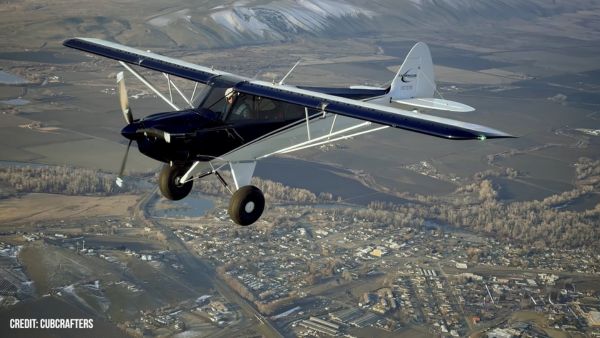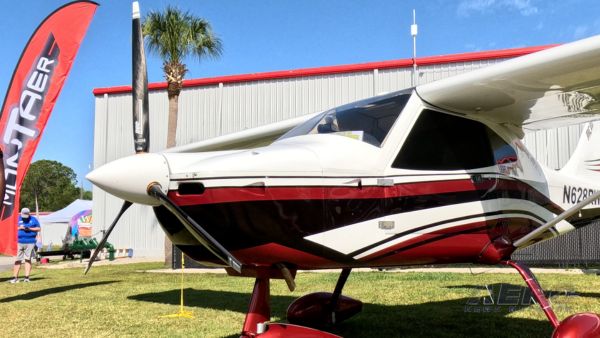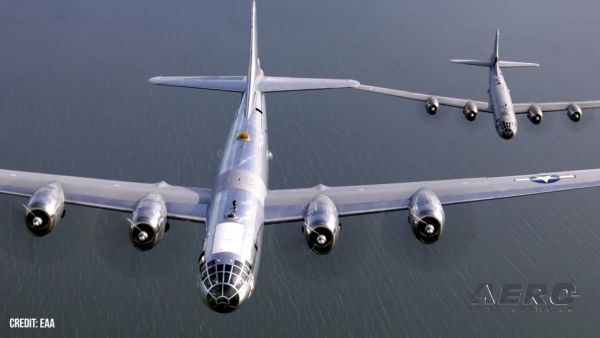Follow Issuance Of ADs For The Problem On Several Specific Models
The FAA has posted a Special Airworthiness Information Bulletin (SAIB) calling for the inspection of V-band couplings on all turbocharged, reciprocating engine powered aircraft, including rotorcraft. Cracks originating out of a spot weld, on multi-segment, spot welded, v-band couplings have led to separation of the outer band and failure of the v-band coupling to retain the tailpipe or exhaust inlet pipe on at least three so-equipped aircraft.

According to the SAIB, the basic design used by manufacturers to attach the tailpipe or exhaust inlet pipe to the turbocharger housing by means of a v-band coupling is common to over 150 different models of single-engine and multi-engine airplanes and rotorcraft. All turbocharger exhaust tailpipe v-band couplings are intended to couple and retain the exhaust tailpipe to the turbocharger housing, exhaust flange (see image above).The FAA is aware of three recent accidents/incidents, involving cracked and/or separated multisegment, spot welded, v-band couplings, which resulted in four fatalities.
The FAA issued airworthiness directives (AD) in the past concerning v-band couplings for numerous aircraft models. The existing ADs remain in effect where applicable. At this time, this airworthiness concern is not considered an unsafe condition that would warrant AD action under part 39 of Title 14 of the Code of Federal Regulations (14 CFR part 39), except for those models already affected by an existing AD. The information and recommendations provided herein are intended to again raise awareness of an issue that has a long history and can lead to serious incidents and fatal accidents if proper maintenance and inspections are not accomplished.
Since the mid-1970’s, the National Transportation Safety Board (NTSB) has written numerous recommendations, and the FAA undertook numerous mandatory and recommended actions concerning v-band couplings/clamps on many different models of aircraft and engines. In addition to and in support of the government efforts, industry design approval holders (e.g., type certificate (TC), supplemental type certificate (STC), or holders of FAA parts manufacturer approval (PMA)) have published numerous instructions for continued airworthiness (ICA) procedures and recommendations for periodic (e.g., 25-, 50- and 100-hour) inspections to ensure proper installation of the exhaust system and the continued integrity of its components for their respective aircraft/engine models.
The three recent events, including four fatalities show that even with the actions taken and the available historic information, v-band coupling failures continue to occur. Often these failures occur shortly after an annual inspection, which brings to question the adequacy of the attention given to v-band couplings during the typical inspection. Failure of a turbocharger exhaust v-band coupling leads to liberation of high temperature exhaust gases (1600°F +), which then impinge on systems, structures, flammable fluid carrying lines, and other materials. There are numerous well-documented cases in which a fractured v-band coupling and leaking exhaust gases have led to inflight fires, smoke in the cockpit, and loss of control of the aircraft.
The main issues identified with failed v-band couplings include:
- cracks in the outer flat band at or near a spot weld;
- signs of over opening of the coupling or excessive twisting;
- misuse of the coupling(s) to bring exhaust system components together and into alignment;
- over-torqueing, outer band material stretching and deformity; and
- exhaust gas leakage, overheating, heavy accumulation of oxides, and corrosion.
Recommendations
The FAA recommends at the next scheduled inspection and at each annual or 100-hour inspection thereafter that you perform a detailed visual inspection of the turbocharger exhaust v-band coupling(s) for signs of:
- Cracks in the coupling outer band (flat) material, primarily at or near a spot-weld.
- Cupping or bowing of the coupling outer band beyond 0.062 inches in depth
- Cracks in the coupling v-retainer segment interior or exterior surface, e.g. at bend radii.
- Looseness, separation of the outer band to v-retainer segment(s) at any spot-weld.
- Gaps between the v-retainer segments and the outer band at or between spot-welds.
- Corrosion that is not easily removed from any component of the coupling.
- Deformity, including but not limited to, out of round, twisted, re-formed by any method.
- Physical damage, including but not limited to, cracks, gouges, tears, bulges, fractures.
- Repairs or any indications of past repairs, as no repair process is known to be effective.
If any of the above conditions are found, the v-band coupling is considered unairworthy and should be removed and replaced before further flight with a new, zero time in service (TIS), FAA-approved coupling according to the instructions and procedures found in the airframe or engine ICA’s, as applicable. All v-band couplings removed from service should be permanently destroyed and not used on any other aircraft or aircraft application.
(Image provided with FAA SAIB)
 ANN's Daily Aero-Linx (04.15.24)
ANN's Daily Aero-Linx (04.15.24) Classic Aero-TV: 'No Other Options' -- The Israeli Air Force's Danny Shapira
Classic Aero-TV: 'No Other Options' -- The Israeli Air Force's Danny Shapira Aero-News: Quote of the Day (04.15.24)
Aero-News: Quote of the Day (04.15.24) Airborne 04.16.24: RV Update, Affordable Flying Expo, Diamond Lil
Airborne 04.16.24: RV Update, Affordable Flying Expo, Diamond Lil ANN's Daily Aero-Term (04.16.24): Chart Supplement US
ANN's Daily Aero-Term (04.16.24): Chart Supplement US



